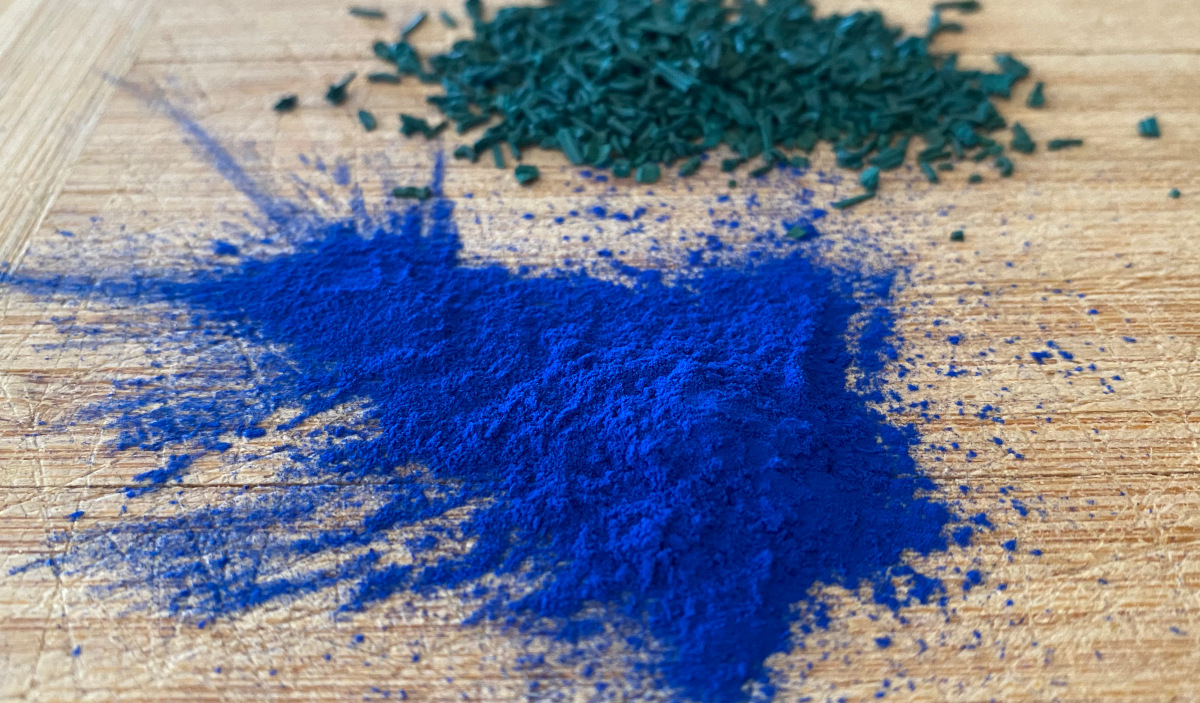Blue Spirulina vs. Spirulina: Unraveling the Vibrant Distinction
If you’ve been exploring the world of superfoods and dietary supplements, you may have come across two intriguing terms: “blue spirulina” and “spirulina.” While both sound quite similar and are packed with health benefits, they are not quite the same. In this blog post, we’ll dive into the vibrant distinction between these two nutritional powerhouses.

Spirulina: The Green Superfood
Spirulina is often referred to as a green superfood and is widely known for its exceptional nutritional content. It’s a type of blue-green algae that thrives in both freshwater and saltwater environments. Spirulina has been consumed for centuries, dating back to the Aztecs and African communities. It’s renowned for its dense concentration of vitamins, minerals, and antioxidants, making it a popular dietary supplement.
Some key attributes of traditional green spirulina include:
1. Nutrient-Rich: Spirulina is loaded with vitamins like B vitamins, minerals such as iron and magnesium, and essential amino acids.
2. Immune Support: It’s believed to boost the immune system and help the body fight off infections.
3. Detoxification: Spirulina is thought to aid in the detoxification process by binding to heavy metals and toxins in the body.
4. Energy Boost: Many individuals report increased energy levels and reduced fatigue when incorporating spirulina into their diets.
Blue Spirulina: The Vibrant Twist
Blue spirulina, on the other hand, is a relatively new entrant in the world of superfoods. It gets its vibrant blue hue from phycocyanin, a pigment derived from spirulina. Blue spirulina is essentially a type of spirulina that has been processed to isolate this blue pigment.
Key features of blue spirulina include:
1. Stunning Color: Its intense blue color is a visual delight and has made it a popular addition to smoothie bowls and food creations on social media.
2. Phycocyanin: The phycocyanin in blue spirulina is touted for its antioxidant and anti-inflammatory properties, which can support overall health.
3. Mild Flavor: Blue spirulina typically has a milder taste compared to green spirulina, making it a versatile ingredient in various recipes.
4. Instagram-Worthy: Its striking blue shade has turned it into an Instagram sensation, with many food enthusiasts using it to create visually appealing dishes.
Choosing Between Green and Blue Spirulina
The choice between green and blue spirulina ultimately comes down to personal preference and your specific dietary needs. Green spirulina is the classic choice, packed with all the beneficial nutrients you’d expect from spirulina. Blue spirulina, on the other hand, adds a touch of visual excitement to your dishes and offers the potential benefits of phycocyanin.
You can even combine both for a vibrant and nutritious twist in your culinary creations. Whether you’re looking to boost your daily nutrient intake, experiment with colorful food, or simply explore the world of superfoods, both green and blue spirulina have their unique merits. It’s worth trying them both to see which one resonates with your taste buds and dietary goals.

